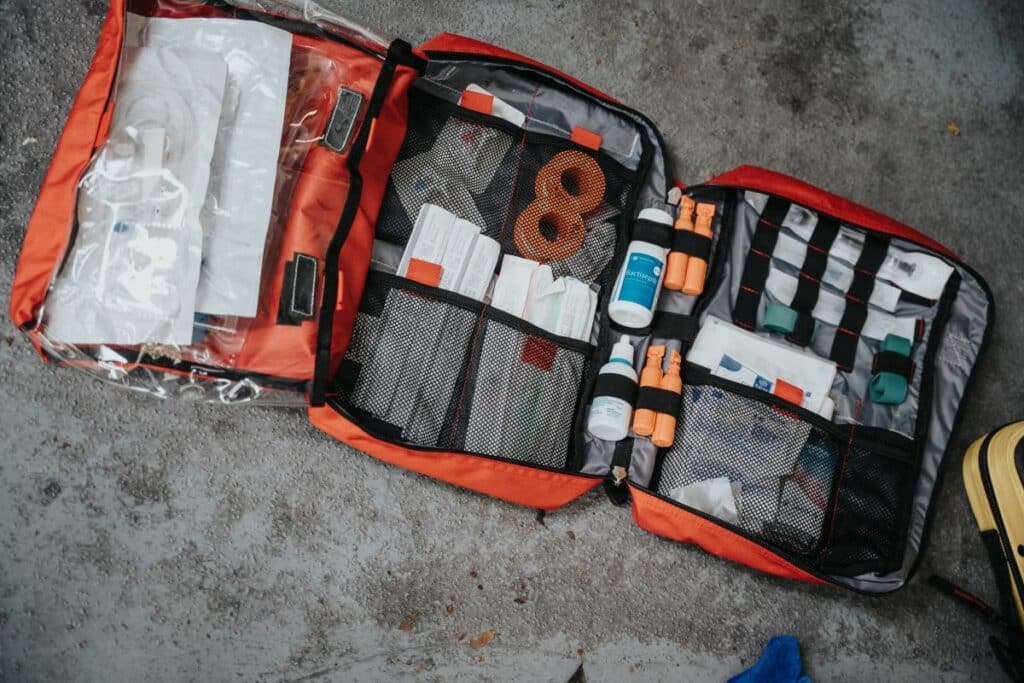Introduction
In emergencies, every second counts-- particularly when it pertains to conserving lives. The act of doing upper body compressions throughout a heart attack can mean the distinction between first aid training adelaide cbd life and fatality. This article looks into the intricacies of Mastering Compressions: Taking Transforms to Save Lives, highlighting the significance of team effort, correct strategy, and knowledge of methods that can enhance survival prices in essential circumstances. By the end of this comprehensive guide, you will have a deeper understanding of not simply basic vs sophisticated life assistance, yet also how taking turns on compressions can enhance rescue efforts.
Mastering Compressions: Taking Turns to Save Lives
When it concerns mouth-to-mouth resuscitation (cardiopulmonary resuscitation), grasping compressions is crucial. Chest compressions are the heart of CPR, essentially and figuratively. They maintain blood circulation to important body organs when the heart stops working, supplying time for emergency situation solutions to show up and take over. Nonetheless, many individuals are unaware that taking turns online CPR first aid courses during compressions can considerably boost efficiency and effectiveness.
The Value of Upper body Compressions
- What are Upper body Compressions? Chest compressions are rhythmic presses related to the breast bone, intending to mimic the heart's pumping action. Why Are They Critical? During cardiac arrest, blood flow stops. Without immediate treatment, mental retardation and death can happen within minutes.
Basic vs Advanced Life Support
Understanding the distinction in between basic vs innovative life support is vital for anyone looking to give support in an emergency.
- Basic Life Assistance (BLS) Often taught in mouth-to-mouth resuscitation programs, BLS consists of upper body compressions, rescue breaths (if trained), and utilizing an AED (Automated External Defibrillator). Advanced Life Support (ALS) ALS includes extra complex procedures like respiratory tract monitoring and medication management by qualified healthcare professionals.
Checking Responsiveness: The Very First Step
Before initiating any kind of life-saving steps, inspecting responsiveness is essential.
- How to Check Responsiveness? Gently tremble the individual's shoulders while asking if they are okay. If there's no action, require emergency situation aid immediately.
Hospital Codes and Protocols
Every health center operates under particular codes that determine exactly how emergencies need to be handled.
- What are Healthcare facility Codes? Codes like "Code Blue" typically show a person needing resuscitation. Why Know These Codes? Understanding protocols guarantees that your actions align with health center plans during an emergency situation.
Public Defibrillator Usage: A Lifesaver
Public accessibility defibrillators play a significant duty in increasing survival prices throughout heart arrests.
- How Do You Use One? Locate a close-by AED. Turn it on and adhere to voice prompts. Ensure no one is touching the individual when providing a shock.
BLS Qualification: Why It Matters
Obtaining your BLS accreditation is invaluable for both laypersons and medical care providers.
- Where Can You Get Certified? Many organizations like the American Heart Organization deal courses at different levels.
Identifying No Breathing: A Crucial Skill
Knowing how to recognize whether a person is breathing is essential prior to starting CPR.
- What Does No Breathing Look Like? Lack of regular breathing patterns; look for wheezing or no activity at all.
Taking Turns on Compressions: A Team Effort
When several rescuers are present, revolving duties during chest compressions can stop fatigue.
Benefits of Taking Turns
Maintains high-quality compressions. Prevents rescuers from coming to be exhausted. Enhances sychronisation amongst group members.Lower Compression Deepness: Is It Effective?
While there's a criterion for compression deepness (a minimum of 2 inches), some may wonder about reduced depths in particular situations.
- Is Reduced Compression Deepness Effective? No-- adhering to recommended standards is important for effective blood flow during CPR.
Slow Compression Rate: What's Optimal?
An usual false impression is that slower prices could be more efficient; nonetheless:
- The optimal rate for chest compressions is in between 100-- 120 per minute.
FAQ Section
1. What ought to I do if I see a person collapse?
Start by inspecting responsiveness-- shout their name or provide a mild shake. If there's no reaction, call emergency services immediately.
2. The length of time should I do CPR?
Continue up until emergency responders arrive or an AED is offered; ideally until you're as well worn down or somebody else can take over.

3. Can I carry out CPR on children?
Yes! The strategy is similar but with lowered pressure-- make use of one hand rather than first aid cpr training near me 2 for smaller kids if needed.
4. Where can I discover BLS certification?
Check regional healthcare facilities or health organizations; several use classes regularly tailored toward different ability levels.
5. Suppose I'm alone when somebody needs help?
If you're alone with a grownup who's unresponsive however breathing generally, call emergency situation solutions before starting mouth-to-mouth resuscitation; if they're not breathing-- begin appropriate away!
6. Is public defibrillator usage safe?
Absolutely! AEDs are made for layman usage with straightforward directions offered by means of audio motivates-- do not hesitate!
Conclusion
Mastering Compressions: Taking Transforms to Save Lives stresses greater than just executing chest compressions; it symbolizes teamwork, awareness of protocols, and knowledge regarding devices like AEDs that collectively contribute in the direction of saving lives in emergencies. Whether you're accredited or merely intend to be prepared for unforeseen scenarios, recognizing these ideas will certainly empower you as a first -responder in defining moments. Bear in mind-- the ability to act with confidence can change concern into activity when it matters most!